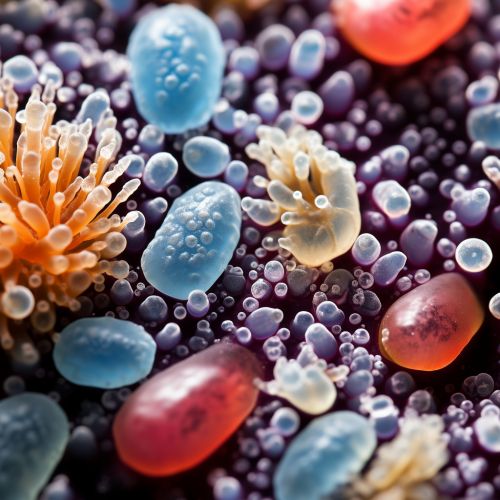Mechanisms of Microbial Resistance to Heavy Metals
Introduction
Microorganisms have developed various mechanisms to resist the toxic effects of heavy metals. This resistance can be intrinsic or acquired and involves processes such as efflux pumping, sequestration, reduction, and methylation. Understanding these mechanisms is crucial in managing environmental pollution and developing strategies for bioremediation.


Efflux Pumping
Efflux pumping is a common mechanism by which microorganisms resist heavy metals. It involves the active transport of heavy metals out of the cell, thereby reducing their intracellular concentration. This process is facilitated by membrane transport proteins such as ATP-binding cassette (ABC) transporters and resistance-nodulation-cell division (RND) pumps. These proteins use the energy derived from ATP hydrolysis to pump heavy metals against a concentration gradient.
Sequestration
Sequestration is another mechanism of microbial resistance to heavy metals. It involves the binding of heavy metals to intracellular or extracellular molecules, thereby reducing their bioavailability. This process can be facilitated by metallothioneins, small cysteine-rich proteins that can bind to heavy metals and sequester them in a non-toxic form. Similarly, some microorganisms produce extracellular polymeric substances (EPS) that can bind to heavy metals and prevent their entry into the cell.
Reduction
Reduction is a process by which microorganisms convert heavy metals from a more toxic oxidation state to a less toxic one. This mechanism is particularly important in the resistance to metals such as chromium and mercury. For instance, certain bacteria can reduce hexavalent chromium (Cr(VI)), a highly toxic and soluble form, to trivalent chromium (Cr(III)), a less toxic and insoluble form. Similarly, some bacteria can reduce mercuric ion (Hg2+) to elemental mercury (Hg0), which is less toxic and can volatilize from the cell.
Methylation
Methylation is a process by which microorganisms add a methyl group to heavy metals, thereby reducing their toxicity and enhancing their mobility. This mechanism is particularly important in the resistance to metals such as arsenic and mercury. For instance, certain bacteria can methylate inorganic arsenic to form methylarsenic and dimethylarsenic, which are less toxic and can be excreted from the cell. Similarly, some bacteria can methylate mercuric ion to form methylmercury, a highly toxic form that can bioaccumulate in the food chain.
Conclusion
Microorganisms have evolved various mechanisms to resist the toxic effects of heavy metals. These mechanisms involve complex biochemical processes and are crucial for the survival of microorganisms in heavy metal-contaminated environments. Understanding these mechanisms can provide insights into the ecology of these environments and inform strategies for bioremediation.
